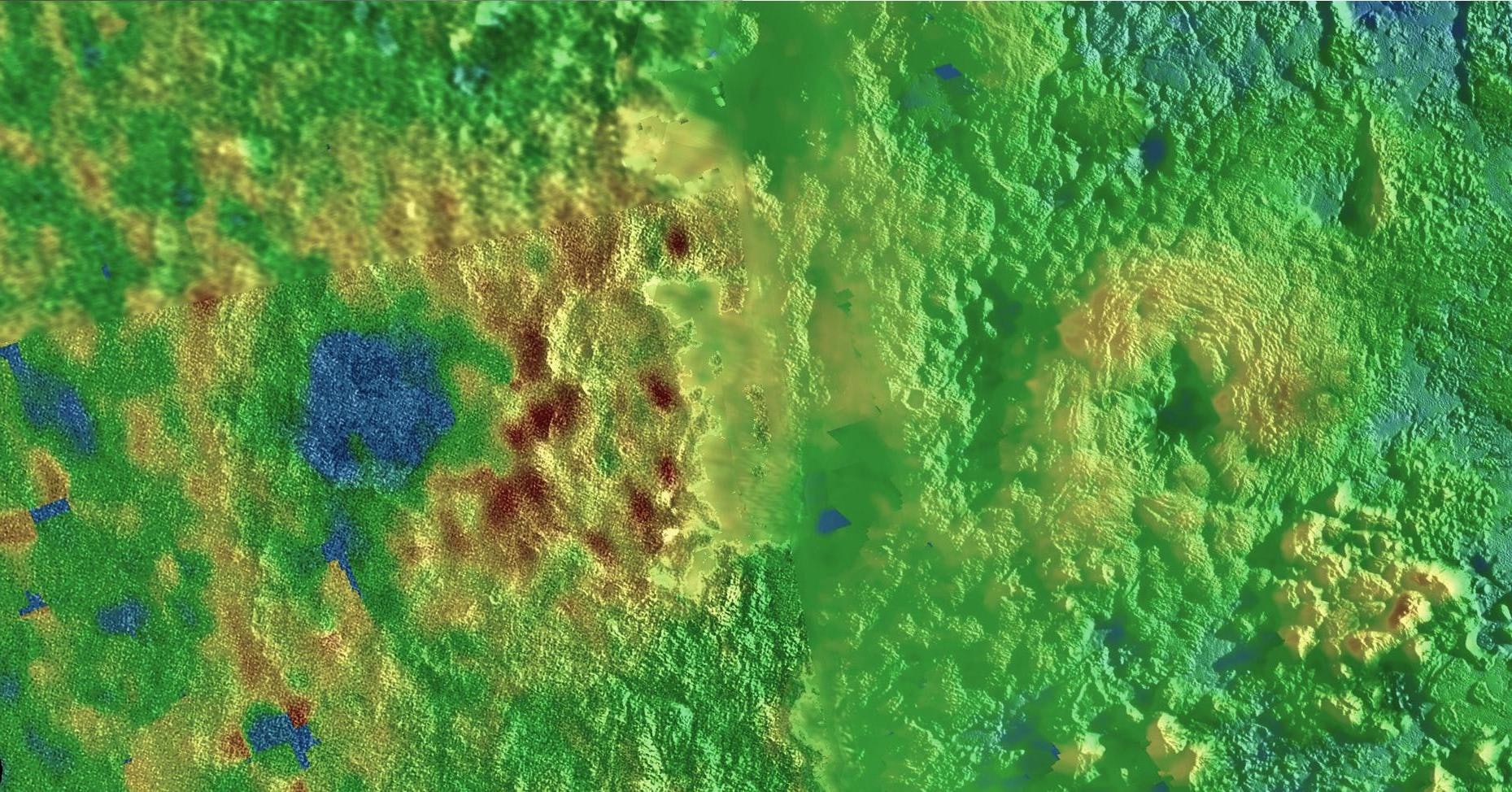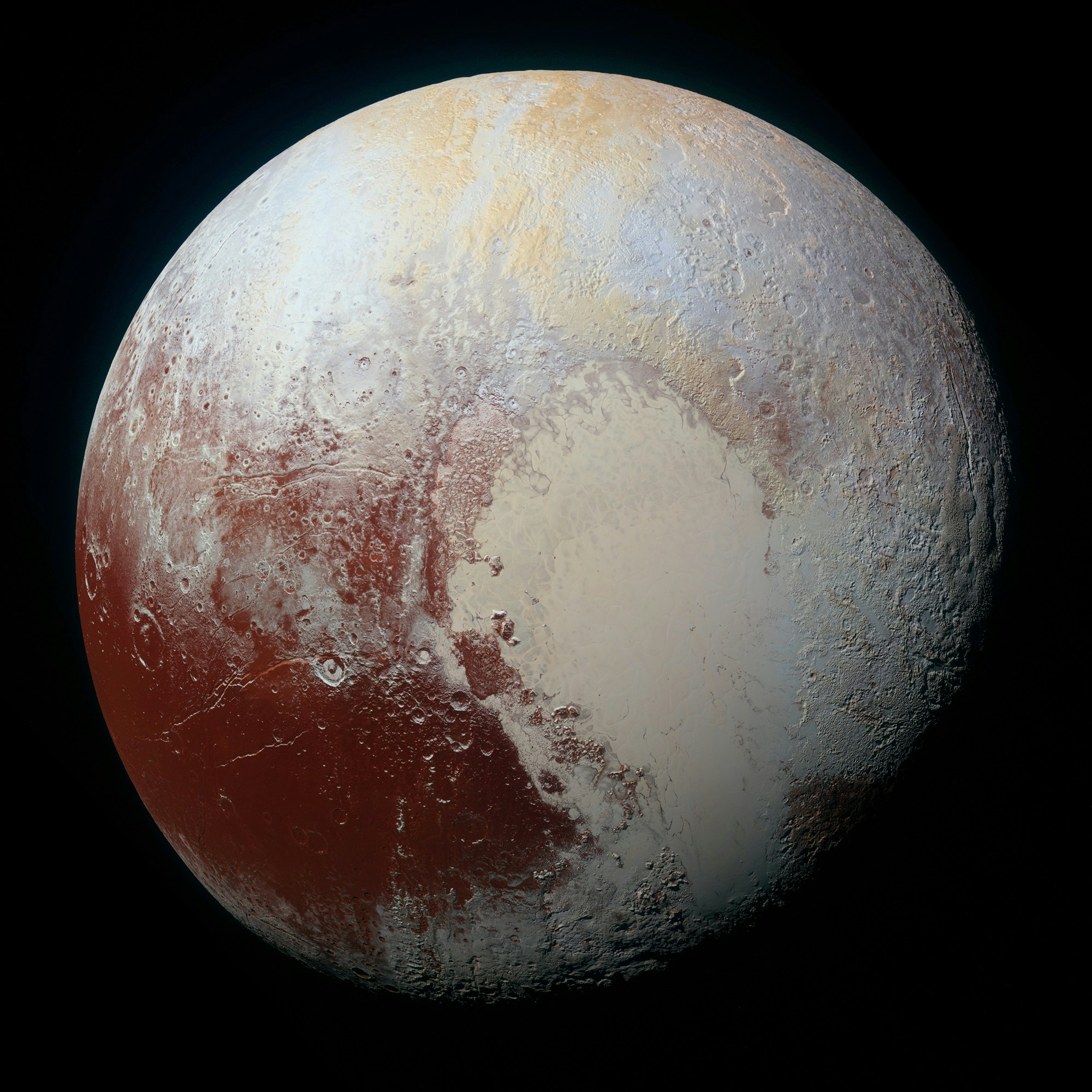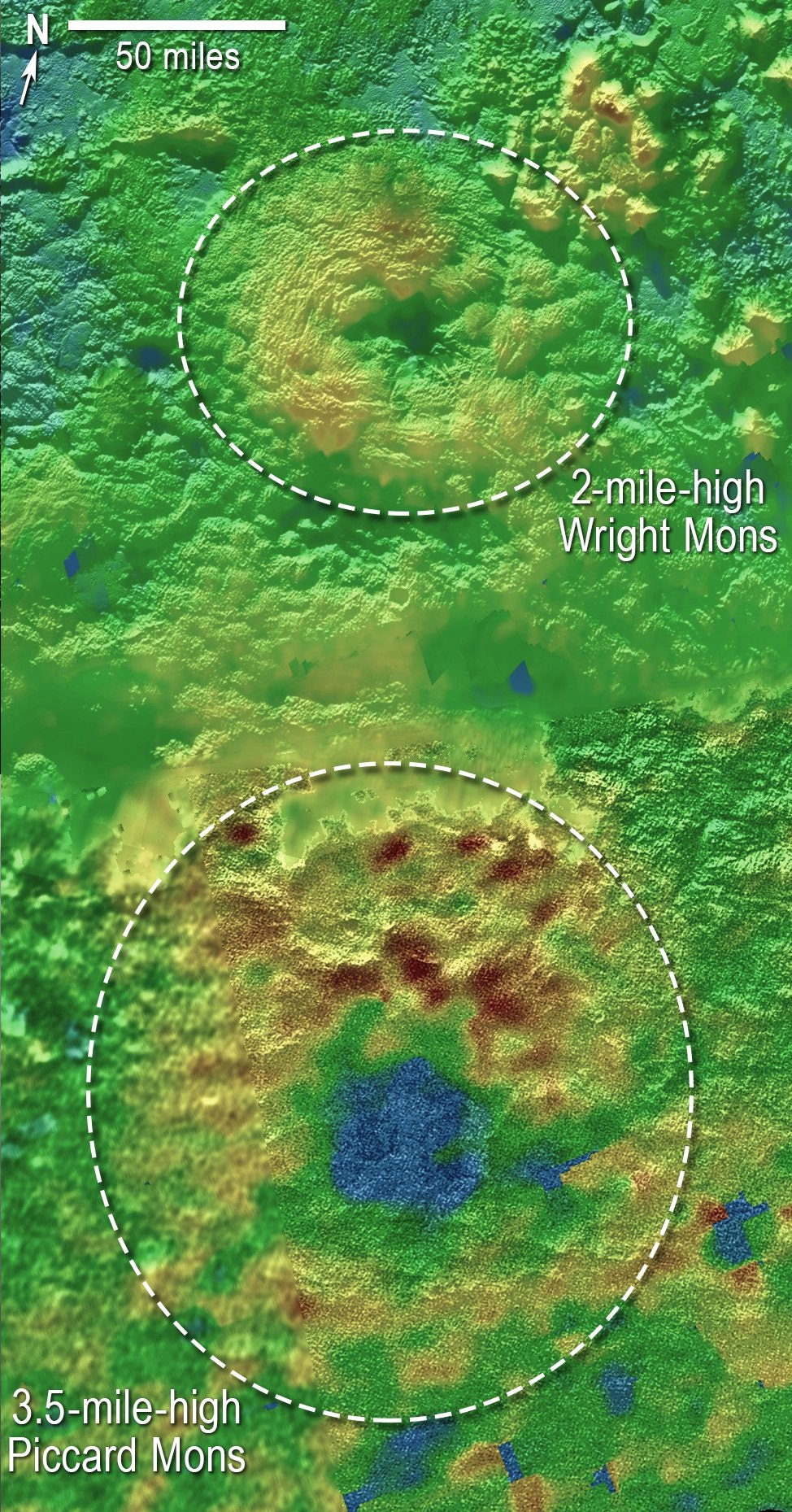
The biggest known ice volcanoes, which spew ice instead of lava, are located on Pluto. Now it turns out size is not the only feature setting apart Pluto's "cryovolcanoes" from all others. In a study published Tuesday in Nature Communications, scientists reveal these cryovolcanoes are unlike any features ever seen.
What did the scientists do? — The researchers examined data that NASA's New Horizons spacecraft collected when it flew by Pluto in 2015. They focused on two volcanoes — Wright Mons and Piccard Mons — analyzing images that revealed details about their structures, and infrared and color scans that shed light on their compositions.
Wright Mons stands about 3.1 miles (5 kilometers) high and spans roughly 93 miles (150 km), similar in size to Mauna Loa in Hawai'i, the largest active volcano on Earth. Piccard Mons is even bigger at about 4.3 miles (7 km) high and 140 miles (225 km) wide. Other known cryovolcanoes pale in comparison — for instance, Doom Mons on Saturn's moon Titan stands only about 0.9 miles (1.5 km) high and 50 miles (80 km) across.
What did they find? — The cryovolcanoes on Pluto look like nothing else scientists have seen. "The great part of going to a new place in the Solar System is that you always find something new," study lead author Kelsi Singer, a planetary scientist at the Southwest Research Institute in Boulder, Colorado, tells Inverse. "There is really nothing else in the Solar System that looks like these features."
The cryovolcanic areas encompass many volcanic domes, with some merging to form larger structures. These suggest that a large amount of mostly water ice — more than 2,400 cubic miles (10,000 cubic km) erupted from multiple sites, likely in more than one event over time.
For example, the flanks of Wright Mons and much of the surrounding terrain are covered in humps 3.7 to 7.4 miles (6 to 12 km) wide on average. These surfaces are unlike what might see from terrains scoured by glacial erosion or carved by volatile ices transforming into vapor — instead, they might have formed from the viscous flow or either slushy or solid but still mobile material.

Other known cryovolcanic features are very different from Pluto's — either vast flat plains like those on Triton, which might have originated from floods of lava like the lunar mares on Earth's moon, or a few isolated mountains or domes on places like Ceres, Europa or Titan. "None have the textures like we have found on Pluto," Singer says.
The unique nature of Pluto's cryovolcanoes likely results from a special combination of its thin atmosphere, extremely cold temperatures, low gravity, and unique composition. "For example, a fluid like liquid water can remain as water on the surface of Earth because of our higher atmospheric pressure," Singer says. "But on Pluto, with its thin atmosphere, it is much closer to vacuum-like conditions, so any liquid that reached the surface would both boil and freeze at the same time and would not remain liquid for long. Also, it is easier to build taller features on Pluto because of the lower gravity."
These cryovolcanoes apparently emerged relatively recently in Pluto's history. They are covered with few to none of the craters that regularly pepper a planet or moon's surface from cosmic impacts, suggesting they are at most 1 billion to 2 billion years old, and possibly much younger.
It remains uncertain how Pluto might still possess enough heat for cryovolcanoes to recently erupt on its surface. As a world less than three-quarters as wide as Earth's moon and less than a fifth of its mass, scientists would have expected it would have cooled off quickly, essentially losing all of the heat it was born with by now.
One possible explanation is that some heat within Pluto might have gotten trapped between thermally insulating layers, like hot coffee kept in a thermos. "Then, if there is a fracture or fault that forms, that could let the heat out all at once," Singer says.

The discovery of these relatively recent cryovolcanoes on Pluto "will cause us to reevaluate the possibilities for the maintenance of liquid water on small, icy worlds that are far from the Sun, and the active processes that allow for the exchange of water between the surfaces and interiors of these worlds," Lynnae Quick, a planetary scientist at NASA’s Goddard Space Flight Center in Greenbelt, Maryland, who did not take part in this research, tells Inverse.
All in all, "finding features that are completely unique to Pluto, that appear to be built late in Pluto's history, tells us that we don't understand everything about how planetary bodies operate," Singer says. "Having more examples of volcanic features across the solar system helps us expand our knowledge of what is possible."
What’s next — Much remains unknown about these cryovolcanoes. "Unfortunately, we don't have a lot of information about what is happening below the surface of Pluto, and the underground plumbing system is an important part of understanding volcanism anywhere in the solar system," Singer says. "Getting more information about the subsurface would likely require a Pluto orbiter mission, but sometimes people can come up with creative ways of learning about the subsurface from other observations."
Besides sending another spacecraft mission to Pluto, future research to learn more about these cryovolcanoes should conduct experiments to understand how the icy materials there behave under Pluto's conditions. "There is very little work on this, so it is hard to know what numbers to put into the models of how these features might form," Singer says.







